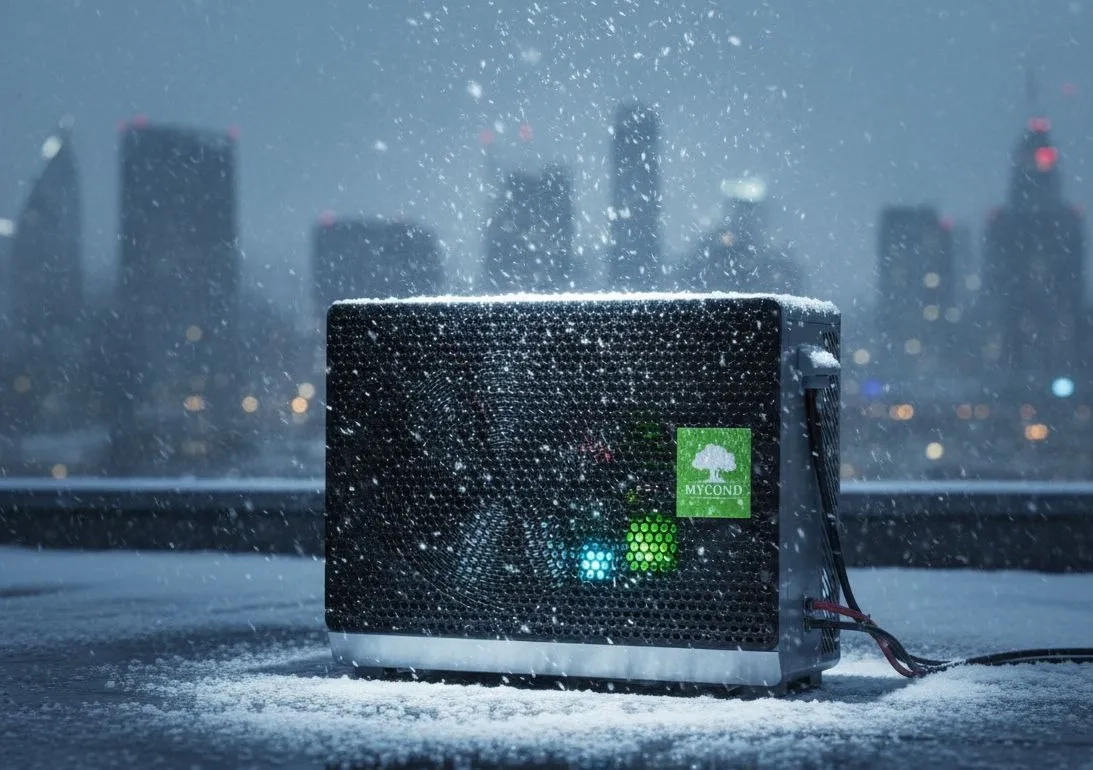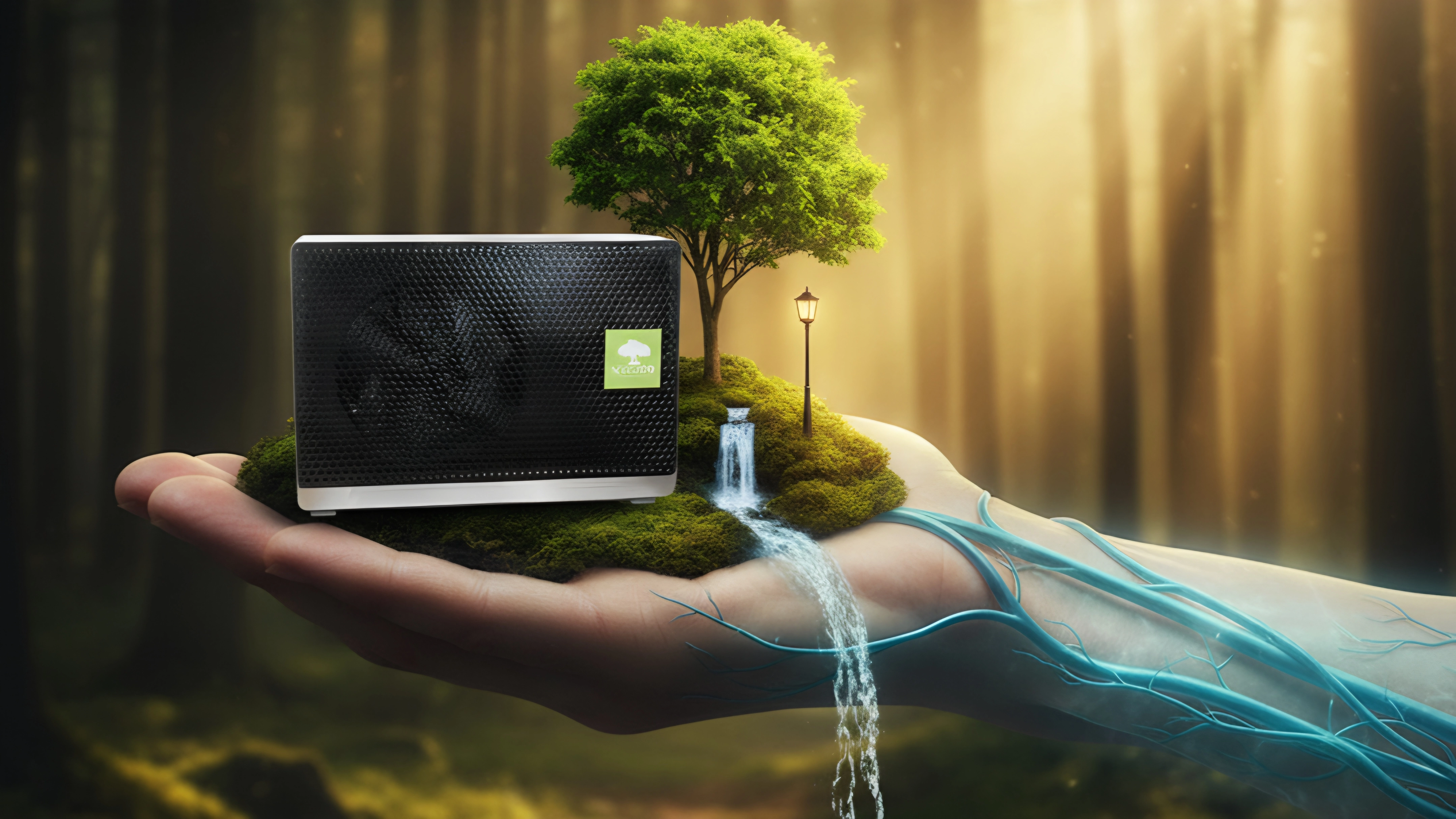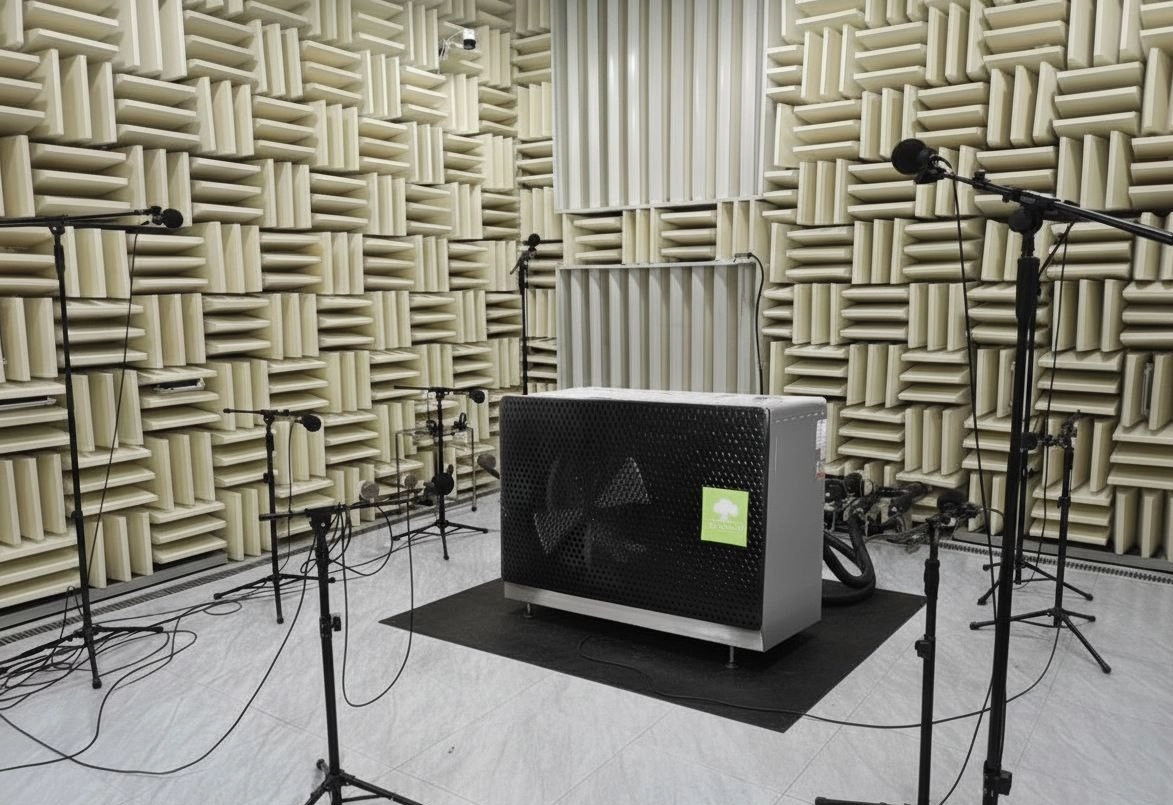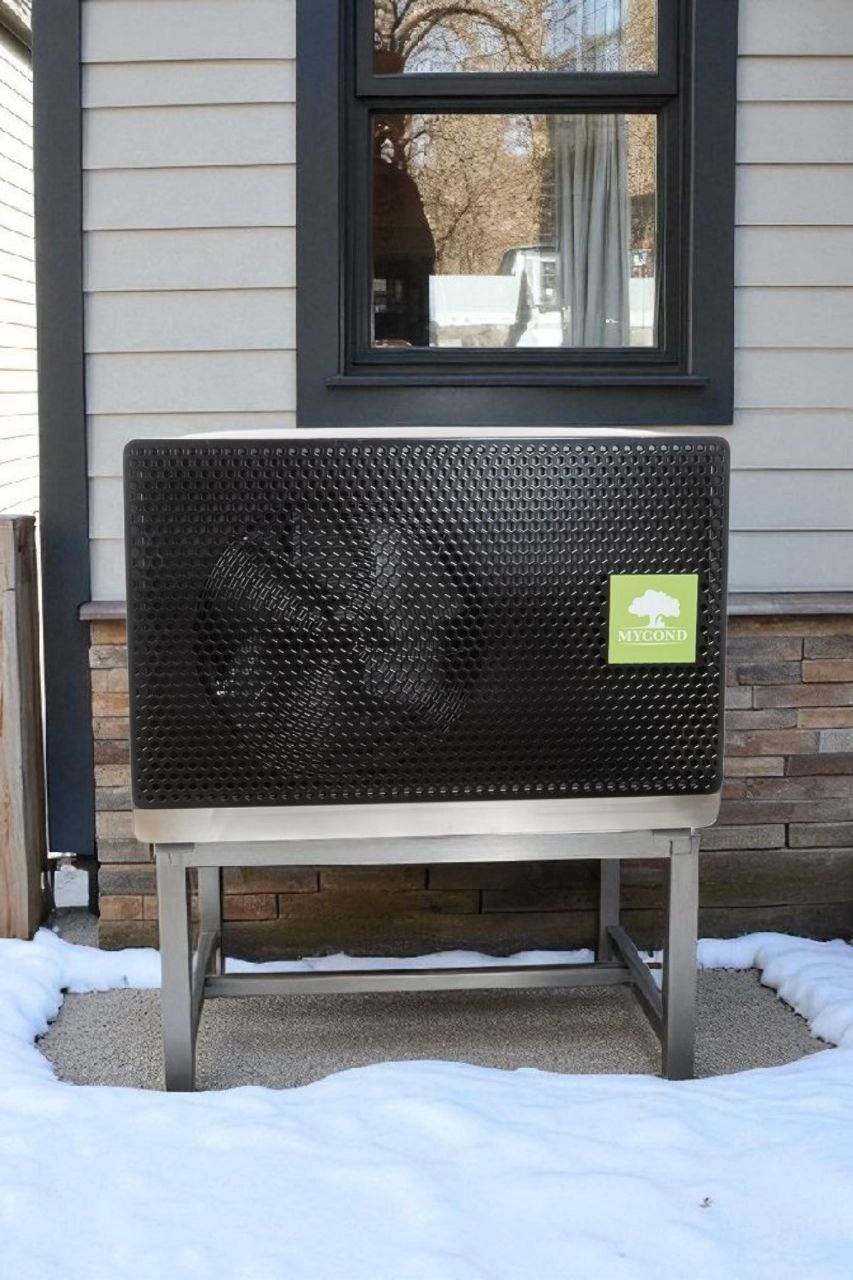
Is it possible to extract heat from cold winter air at -20°C? For many, it sounds like a paradox — how can you “pull” heat from where there’s almost none? This is exactly the principle behind heat pumps, which are becoming an increasingly popular heating solution across Europe.
Even at low temperatures, air contains thermal energy. Modern heat pumps, operating on the principle of a reversed refrigeration cycle, can extract this energy and “transfer” it into your home, providing comfortable warmth even on the coldest winter days.

The physics of a heat pump: how to extract heat from cold
The basis of a heat pump is the refrigeration cycle, only running in reverse. This cycle consists of four key stages:
- Evaporation — the R32 refrigerant in a liquid state passes through the evaporator (outdoor unit), where it contacts the ambient air. Since the refrigerant’s boiling point is lower than the air temperature, it absorbs heat and evaporates.
- Compression — the compressor compresses the gaseous refrigerant, increasing its temperature and pressure (from approximately -25°C to +70–90°C).
- Condensation — the heated refrigerant passes through the condenser (indoor unit), where it transfers heat to the water in the heating system and condenses back into a liquid.
- Expansion — the liquid refrigerant passes through the expansion valve, the pressure drops sharply, expansion occurs, and the cycle repeats.
The R32 refrigerant has critical properties: at low pressure it boils even at -52°C, which allows it to absorb thermal energy from the air even in severe frost. When compressed, its temperature rises significantly, making it possible to heat the water in the heating system to +35–55°C.
Key components of a heat pump and their functions

A modern heat pump is a sophisticated engineering system with the following components:
- Inverter DC compressor — the heart of the system, providing smooth power modulation from 30% to 100%, adapting to heating needs. Unlike ON/OFF compressors, inverter technology improves efficiency and extends equipment lifespan.
- Finned evaporator of the outdoor unit — a heat exchanger with a large surface area for efficient heat collection from the air. Equipped with auto-defrost to remove frozen condensate.
- Plate condenser of the indoor unit — a compact heat exchanger that transfers heat from the refrigerant to the water in the heating system with minimal losses.
- Electronic expansion valve (EEV) — a precision component for accurately metering refrigerant depending on the heat load, increasing system efficiency.
- EC fan motors — energy-efficient electronically commutated motors for smooth airflow control.
- Temperature and pressure sensors — a network of sensors that constantly monitors system parameters for optimal operation.
- Weather-compensated controller — an intelligent controller that adjusts the flow temperature depending on the outdoor temperature for maximum efficiency.
BeeSmart heat pump line-up: technical specifications
BeeSmart heat pumps are available in different models to meet the needs of various types of homes:
| Model | Heating capacity A7 W35 (kW) | COP A7 W35 | Max. output A-7 W35 (kW) | COP A-7 W35 | Outdoor temperature range (°C) | Refrigerant | Noise level (dBA) | Energy efficiency class | Power supply |
|---|---|---|---|---|---|---|---|---|---|
| MHCS 035 NBS/UBS | 9,2 | 4,38 | 5,7 | 2,97 | -25 to +43 | R32 | 52 | A+++ | 230V 50Hz |
| MHCS 045 NBS/UBS | 11,6 | 4,3 | 7,65 | 2,99 | -25 to +43 | R32 | 52 | A+++ | 230V 50Hz |
| MHCS 050 NBS/UBS | 15,35 | 4,78 | 10,5 | 3,27 | -25 to +43 | R32 | 59 | A+++ | 400V 50Hz |
| MHCS 070 NBS/UBS | 18,5 | 4,47 | 12,6 | 3,12 | -25 to +43 | R32 | 61 | A+++ | 400V 50Hz |
The designation A7 W35 means the parameters are measured at an air temperature of +7°C and an outlet water temperature from the heat pump of +35°C according to EN14511. Similarly, A-7 W35 indicates measurements at an air temperature of -7°C.
When it makes sense to choose a BeeSmart heat pump
BeeSmart heat pumps stand out among competitors thanks to the following advantages:
- Stable operation down to -25°C without loss of functionality (unlike budget models limited to -15°C)
- High SCOP (seasonal coefficient of performance) for low-temperature heating systems such as underfloor heating
- Ability to integrate additional heat sources via Modbus to build hybrid heating systems
- Weather-compensated control to save up to 20% energy compared with systems with a constant flow temperature
- Heat Pump Keymark certification — a European guarantee of the stated parameters, confirmed by independent tests

Comparing a heat pump with alternatives
To evaluate a heat pump objectively, it’s important to compare it with alternative heating systems:
- Gas boilers — lower upfront investment, but operating costs are 3–4 times higher compared to heat pumps
- Geothermal ground-to-water heat pumps — deliver a more stable COP throughout the year, but drilling boreholes increases the budget by 40–60%
- Monobloc heat pumps
| Heating type | COP at +7°C | COP at -7°C | COP at -15°C | COP at -25°C |
|---|---|---|---|---|
| BeeSmart air-to-water heat pump | 4,3-4,8 | 2,9-3,3 | 2,4-2,7 | 1,9-2,2 |
| Geothermal heat pump | 5,0-5,5 | 4,8-5,2 | 4,5-5,0 | 4,3-4,8 |
| Condensing gas boiler | 0,97 | 0,97 | 0,97 | 0,97 |
| Electric boiler | 0,99 | 0,99 | 0,99 | 0,99 |
Installation and operation features of a heat pump
For efficient operation of an air-to-water heat pump, follow these recommendations:
- Hydraulic circuit with a buffer tank — ensures stable operation and protects the compressor from frequent cycling
- Mixing units for different circuits — allow simultaneous service of radiators (W55) and underfloor heating (W35)
- Regular maintenance — includes checking refrigerant pressure once a year and cleaning heat exchangers
- Auto-defrost cycle — an important function that activates when ice buildup on the evaporator is detected; the system temporarily switches to cooling mode for 5–10 minutes to remove ice
Frequently asked questions about heat pumps
Can a heat pump operate at -25°C?
Yes, modern BeeSmart heat pumps are specifically designed to operate in low temperatures down to -25°C. Their efficiency (COP) decreases, but they continue to provide sufficient heating.
How much electricity does a heat pump consume?
Electricity consumption depends on the model’s capacity and temperature conditions. For a 150 m² home with a 9 kW BeeSmart heat pump, average consumption is 4,500–5,500 kWh per heating season.
What are a heat pump’s COP and SCOP?
COP (Coefficient of Performance) is the instantaneous efficiency, showing the ratio of heat produced to electricity consumed under specific conditions. SCOP (Seasonal COP) is the seasonal coefficient, accounting for efficiency over the entire heating season at varying temperatures.
Why is a heat pump louder in winter?
Increased noise in winter may be related to the compressor working harder at low temperatures and to defrost cycles. BeeSmart heat pumps have a noise level of 52–61 dBA, comparable to a quiet conversation.
Do I need a backup boiler?
For BeeSmart heat pumps that operate down to -25°C, a backup boiler is usually unnecessary. However, to ensure extra reliability or in regions with extremely low temperatures, installing an auxiliary heat source may be advisable.
How often do you need to recharge the refrigerant?
Modern heat pumps are sealed systems that do not require regular recharging. With proper installation, R32 can last for the entire service life of the equipment (15–20 years). Recharging is only needed in case of leaks.
What’s the difference between R32 and R410A?
R32 is a more modern refrigerant with a lower Global Warming Potential (GWP 675 versus 2088 for R410A). R32 provides higher energy efficiency, requires a smaller charge, and is a more environmentally friendly solution.

Checklist: 5 parameters for choosing a heat pump
- Operating temperature range (min. -25°C for northern regions)
- SCOP of at least 4.0 for low-temperature heating systems
- Inverter control of compressor power
- A+++ energy efficiency class
- Heat Pump Keymark certification
SCOP calculation formula
SCOP = Σ(Heat energy delivered over the heating season) / Σ(Electrical energy consumed over the heating season)
Common mistakes when installing heat pumps
- Underestimating heat exchanger surface areas at the design stage
- Lack of a buffer tank, causing short cycling
- Incorrect heat pump capacity selection for the building’s heat load
- Ignoring hydraulic piping requirements
Selecting a heat pump for your home
Every home is unique, so proper heat pump selection requires an individual approach. For precise capacity calculation, economic justification, and a heating system design, contact our engineers. They will professionally select the BeeSmart model that is optimal for your property.
Call the number on the website or fill out the contact form to get advice on choosing a BeeSmart air-to-water heat pump.